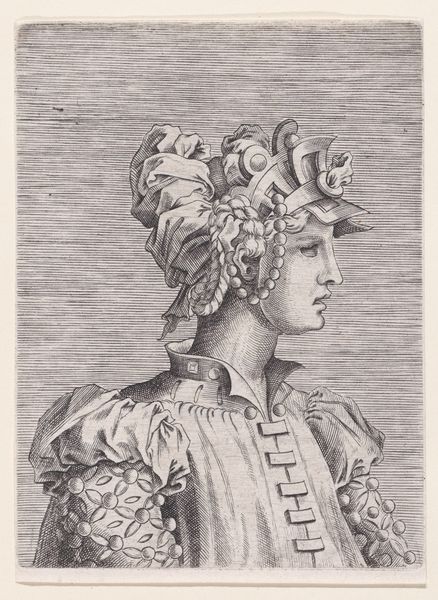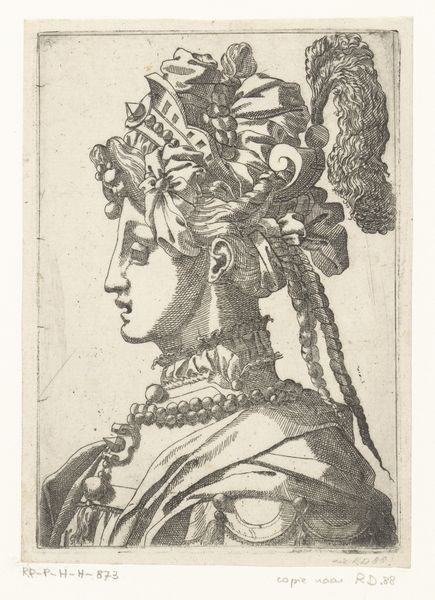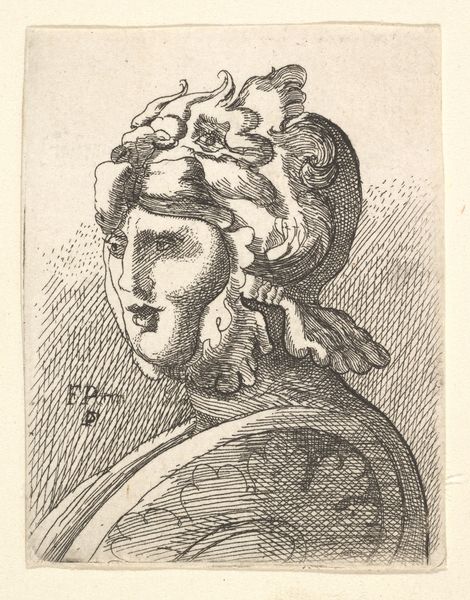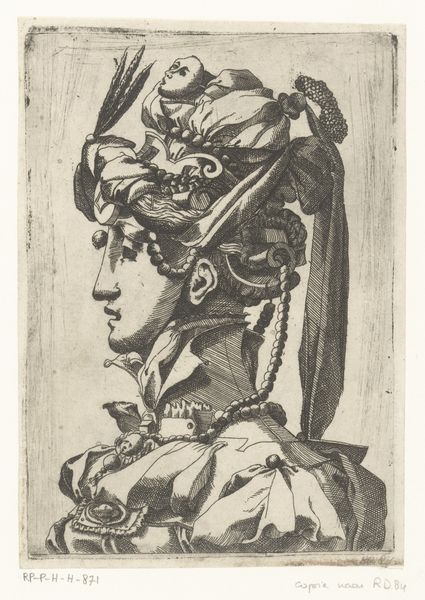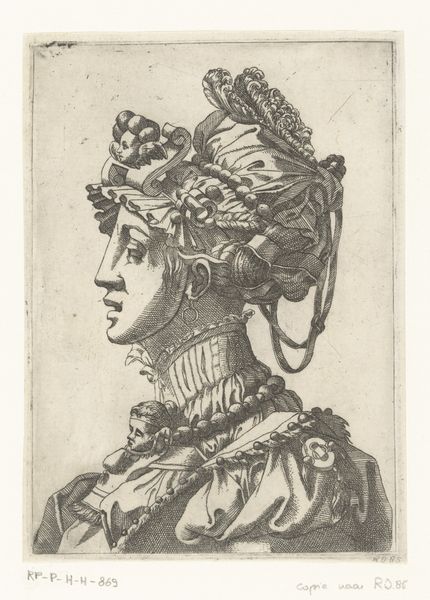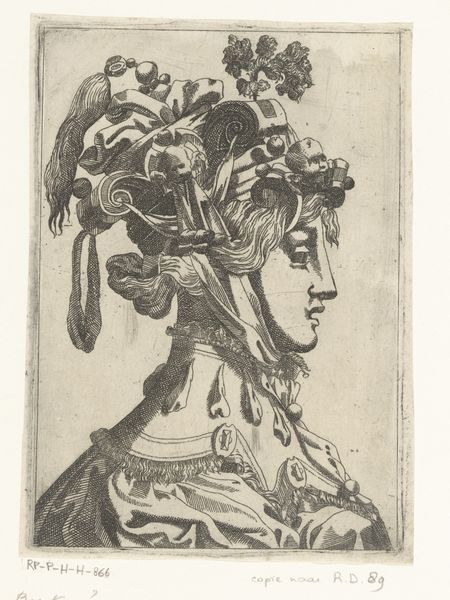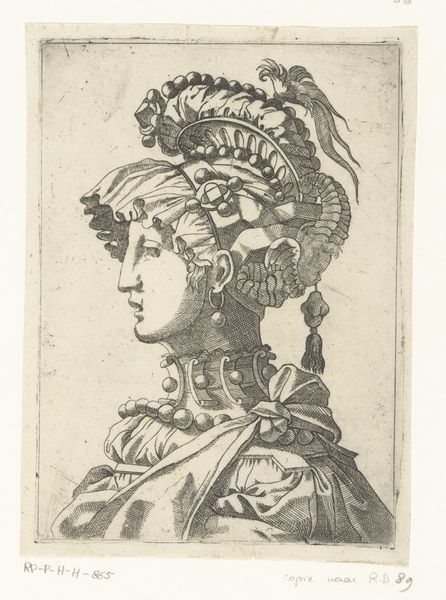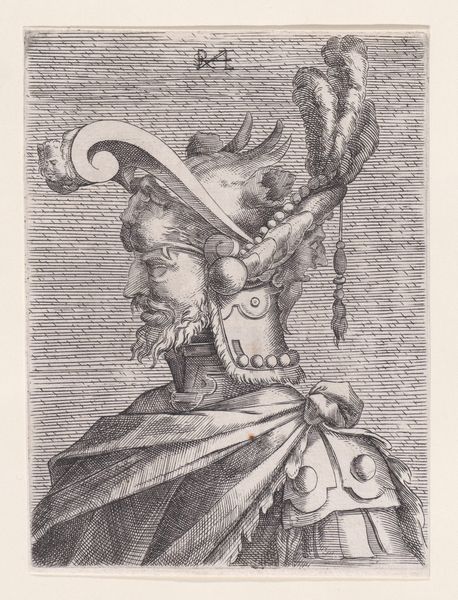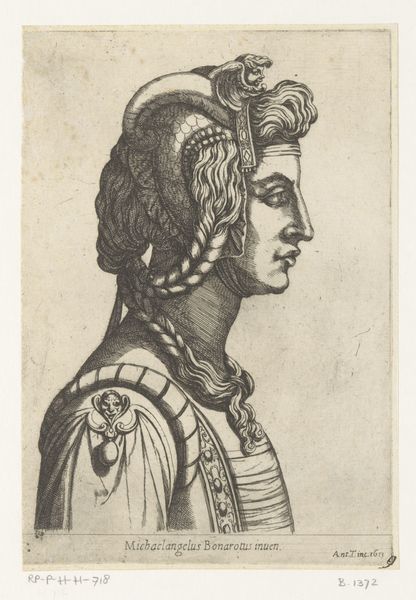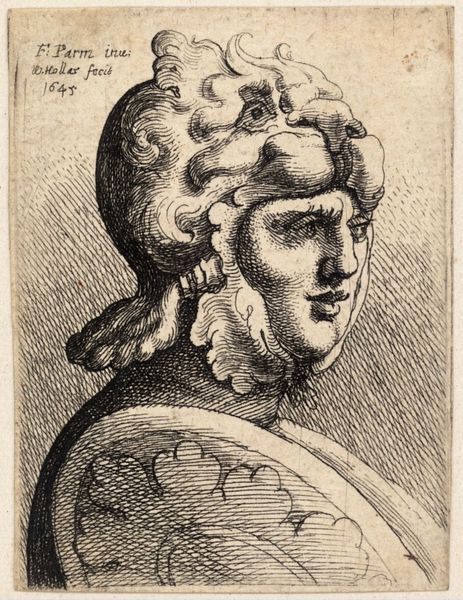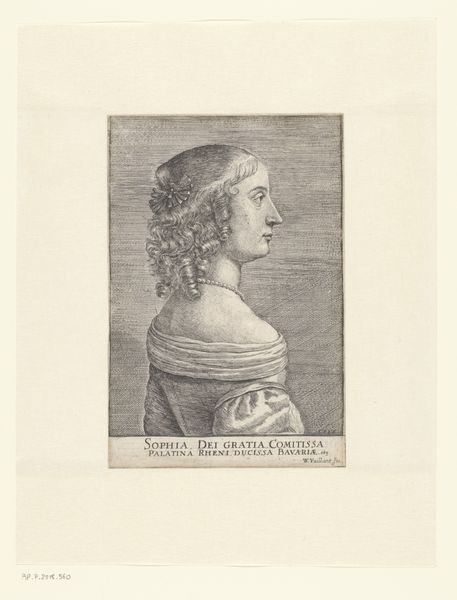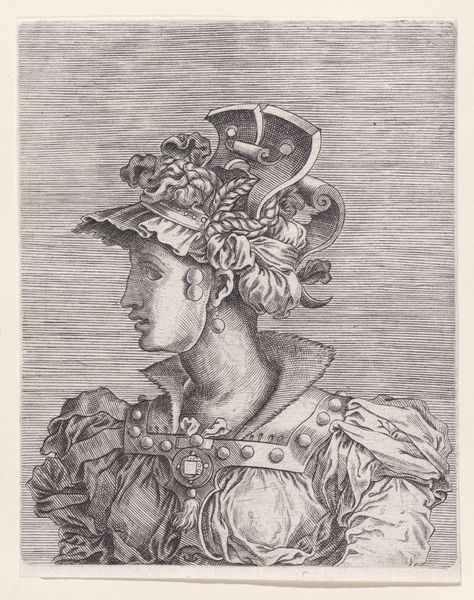
Bust of a Woman Wearing a Fantastic Head-dress and Mask 1525 - 1600
0:00
0:00
drawing, print, engraving
#
portrait
#
drawing
#
head
# print
#
mannerism
#
11_renaissance
#
portrait drawing
#
history-painting
#
engraving
Dimensions: sheet: 5 5/8 x 4 in. (14.3 x 10.2 cm)
Copyright: Public Domain
Curator: Look at the opulence rendered in these etched lines. This is "Bust of a Woman Wearing a Fantastic Head-dress and Mask," an engraving made sometime between 1525 and 1600 by René Boyvin. Editor: What strikes me first is the sheer density of adornment. It's overwhelming, almost suffocating. The horizontal hatching creates a strangely oppressive backdrop, further emphasizing the weight of the costume. Curator: Yes, and notice how that dense hatching suggests both form and material—it gives the print depth but also hints at the engraver's deliberate process. It speaks to the hours dedicated to crafting this single image, the labor involved. The image almost fetishizes skilled production. Editor: I'm fascinated by the symbolic language at play here. The woman's headdress is a riot of ribbons, pearls, and braids—but above all, ribbons that recall triumphal wreaths and diadems, alluding to power and status. But what does the mask conceal, and why? What does this enforced vision obscure from the viewer? Curator: Perhaps it points to the artifice of courtly life during the late Renaissance, and also reveals the culture of fashion during this era. Masks were fashionable across Europe. And while Boyvin designed the print, its production suggests a larger workshop practice, implying multiple hands were involved. Editor: Absolutely, and the lion motif emblazoned on her chest seems significant too, don’t you think? Lions often represent courage and nobility but also pride and ferocity. Does that mask hide her true leonine face, or is this just more theatre? The print acts almost as an early fashion plate, codifying trends in elite circles while also performing that visual language. Curator: I agree. And beyond the specific identity, the lion suggests a more general attribute deemed desirable or even necessary for a woman of stature. The circulation of this image, both as a work of art and as a template, speaks volumes. This portrait allows a vision of what women could make possible within these cultures and societies. Editor: In this dance between revelation and concealment, the artwork encourages us to delve deeper into the symbology embedded within its artifice. It almost functions as a cultural artifact, revealing beliefs, status, and aspiration in the late Renaissance period. Curator: I see it similarly—a beautiful synthesis between high art and the skilled labor of reproductive printmaking, a tangible marker of both artistic skill and historical context.
Comments
No comments
Be the first to comment and join the conversation on the ultimate creative platform.
